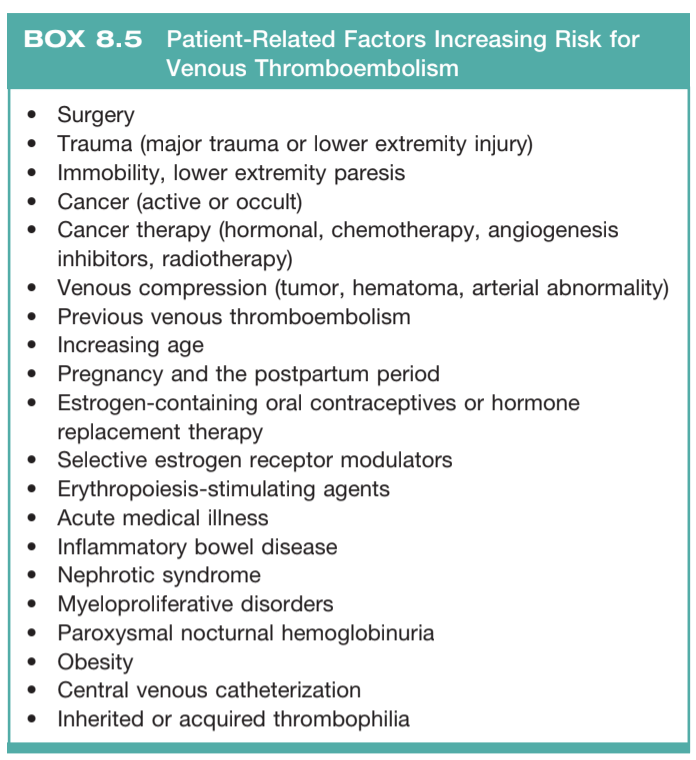Postoperative Care
VTE prophylaxis
| Risk | Criteria | Recommendation |
|---|---|---|
| Low | Minor surgery + Age < 40yo + No other risk factors |
Early ambulation |
| Moderate | Minor surgery + other risk factors 40-60yo without other risk factors |
Heparin 5000U TID Enoxaparin 40mg daily (30mg if CrCL < 30) |
| High | Age > 60yo 40-60yo with other risk factors |
|
| Highest | Multiple risk factors | Enoxaparin 40mg daily (30mg if CrCL < 30) + SCD Heparin 5000U TID + SCD |
Non-pharmacologic DVT prophylaxis options
- Compression stockings: decrease DVT risk in low risk patients, need to be proper fit, contraindicated if PVD, pulmonary edema, peripheral neuropathy, leg deformity
- Pneumatic compression: prevent venous stasis and stimulate fibrinolytic activity, reduces risk of DVT by 50%, use at all times unless ambulating, contraindicated if DVT, PVD, pulmonary edema, or leg deformity
Wound care
- Closed incision: keep dressing for 48hr (can change if leakage), consider antimicrobial or negative pressure dressings if wound high risk for breakdown
- Open incision: debride dead tissue, clean with dressing changes, pack wound, consider negative presure dressing
- Ostomy care: empty prior to being full, change pouch first thing in AM (reduces leakage), measure size appropriately (avoid excoriation/breakdown), consider drainage bag for nighttime
- Passive drainage: can use Penrose to assess for bleeding/infection, avoid rapid abscess closure
References
- AUA Core Curriculum
- Culkin, Daniel J., et al. "Anticoagulation and antiplatelet therapy in urological practice: ICUD/AUA review paper." The Journal of urology 192.4 (2014): 1026-1034.
- Naik, Rishi, et al. "The role of extended venous thromboembolism prophylaxis for major urological cancer operations." BJU international 124.6 (2019): 935-944.
- Smith, Angela, et al. "Optimizing outcomes in urologic surgery: postoperative." Am Urol Assoc. 2018.
- Violette, Philippe D., et al. "Guideline of guidelines: thromboprophylaxis for urological surgery." BJU international 118.3 (2016): 351-358.
- Wieder JA: Pocket Guide to Urology. Sixth Edition. J.Wieder Medical: Oakland, CA, 2021.
